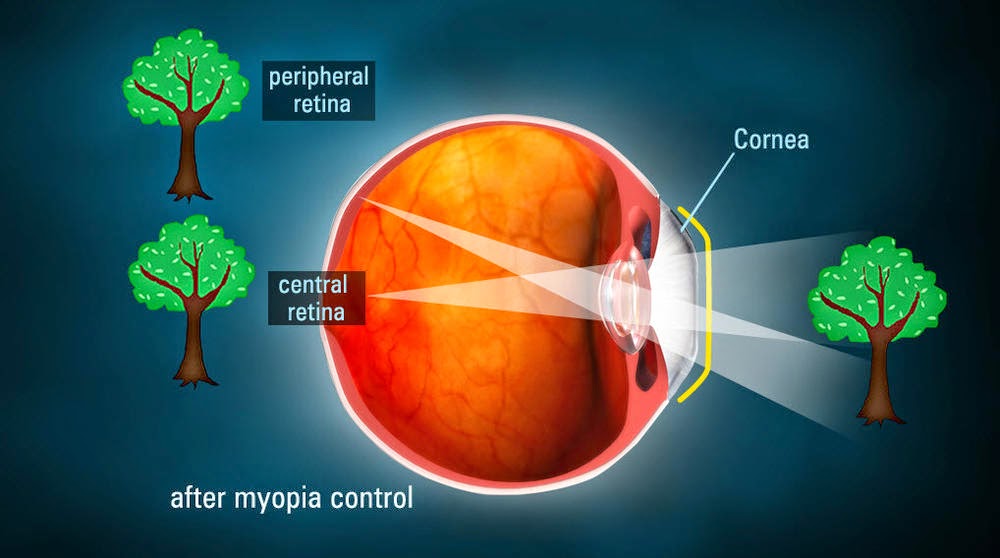Myopia or Nearsightedness
Myopia or nearsightedness, is the most common refractive problem of the eye and it has become more prevalent in current years.
Myopia Symptoms and Signs
If you have myopia, you typically will have difficulty seeing distant objects clearly and reading road signs, but will be able to see well for close-up tasks such as computer use & reading.
Other signs and symptoms of myopia include flickering, headaches and eye strain. Feeling weariness when playing sports or driving also can be a symptom of uncorrected nearsightedness.
Other signs and symptoms of myopia include flickering, headaches and eye strain. Feeling weariness when playing sports or driving also can be a symptom of uncorrected nearsightedness.
What Causes Myopia?
Nearsightedness occurs when the eyeball is too long, close to the focusing power of the cornea and lens of the eye. So this causes light rays to focus at a point in front of the retina, rather than directly on its surface.
Myopia also can be caused by the cornea and / or lens being too curved for the length of the eyeball. In some basic facts, myopia is due to a combination of these factors.
Myopia typically begins in childhood and you may have a higher risk if your parents are nearsighted. In most cases, nearsightedness stabilizes in early adulthood but sometimes it continues to progress with age.
Myopia also can be caused by the cornea and / or lens being too curved for the length of the eyeball. In some basic facts, myopia is due to a combination of these factors.
Myopia typically begins in childhood and you may have a higher risk if your parents are nearsighted. In most cases, nearsightedness stabilizes in early adulthood but sometimes it continues to progress with age.
Myopia Treatments
Myopia can be corrected with glasses, contact lenses or refractive surgery. Depending on the degree of your Nearsightedness, you may need to wear your glasses or contact lenses all the time or only when you need very clear distance vision, like when driving, seeing a watching a movie.
If you're nearsighted, the first number ("sphere") on your eyeglasses prescription or contact lens prescription will be preceded by a minus sign (–). The higher the number, the more nearsighted you are. Refractive surgery can reduce or even eliminate your need for glasses or contacts.
If you're nearsighted, the first number ("sphere") on your eyeglasses prescription or contact lens prescription will be preceded by a minus sign (–). The higher the number, the more nearsighted you are. Refractive surgery can reduce or even eliminate your need for glasses or contacts.
In most cases, nearsightedness is simply a minor inconvenience and poses little or no risk to the health of the eye. But sometimes myopia can be so progressive and severe it is considered a degenerative condition. Degenerative myopia also may increase the risk of cataracts.
If you experience these symptoms or signs while wearing your contact lenses or glasses, schedule a comprehensive eye examination with our ophthalmologist or optometrist to see if you need a stronger prescription.
For more details visit us: www.high-myopia-eye-hospital.com
For free online consultation: saraswathieyehospital@gmail.com
For more details visit us: www.high-myopia-eye-hospital.com
For free online consultation: saraswathieyehospital@gmail.com






